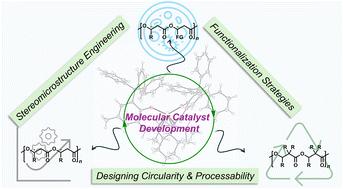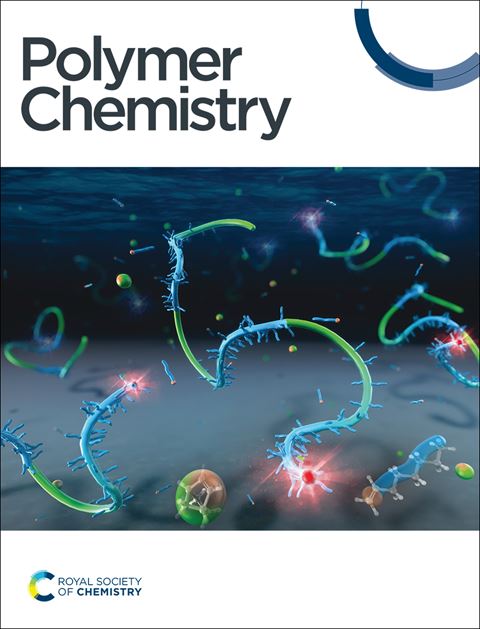调节合成pha的体微观结构、圆度和功能
IF 3.9
2区 化学
Q2 POLYMER SCIENCE
引用次数: 0
摘要
可生物降解塑料,特别是那些可以在不受控制的环境中生物降解的塑料,对帮助遏制全球塑料危机具有重要意义。聚(3-羟基烷酸酯)s (pha)是一种罕见的可在管理和非管理条件下生物降解的塑料,可以通过微生物或化学方法合成。除了这个特殊的优点,PHA还可以表现出包括聚烯烃在内的商品聚合物的热、机械和光学性能,它们可以设计成化学可回收的循环PHA经济,或者功能化以获得额外的、多样化的和/或改进的性能。为了实现化学催化相控化合物的模块化,立体选择性和可控分子催化剂的开发以及单体结构和聚合过程的设计至关重要。在此背景下,本文重点介绍了PHA立体显微结构工程、熔体可加工性和化学可回收性以及化学功能化等方面的最新进展。本文章由计算机程序翻译,如有差异,请以英文原文为准。

Regulating the stereomicrostructure, circularity and functionality of synthetic PHAs
Biodegradable plastics, especially those that can biodegrade in uncontrolled enviroments, are of importance to help curb the global plastics crisis. Poly(3-hydroxyalkanoate)s (PHAs), which can be either microbially or chemically synthesized, are one of the rare classes of plastics that can biodegrade under both managed and unmanaged conditions. Besides this exceptional upside, PHAs can also be tuned to exhibit thermal, mechanical, and optical properties of commodity polymers including polyolefins, and they can be designed to be chemically recyclable towards a circular PHA economy or functionalized to acquire additional, diverse and/or improved properties. To enable such modularity in chemocatalytic PHAs, the development of stereoselective and controlled molecular catalysts, as well as the design of monomer structures and polymerization processes, is of primary importance. In this context, this Perspective article focuses on three recent advancements, including PHA stereomicrostructural engineering, melt-processability and chemical recyclability, and chemical functionalization.
求助全文
通过发布文献求助,成功后即可免费获取论文全文。
去求助
来源期刊

Polymer Chemistry
POLYMER SCIENCE-
CiteScore
8.60
自引率
8.70%
发文量
535
审稿时长
1.7 months
期刊介绍:
Polymer Chemistry welcomes submissions in all areas of polymer science that have a strong focus on macromolecular chemistry. Manuscripts may cover a broad range of fields, yet no direct application focus is required.
 求助内容:
求助内容: 应助结果提醒方式:
应助结果提醒方式:


